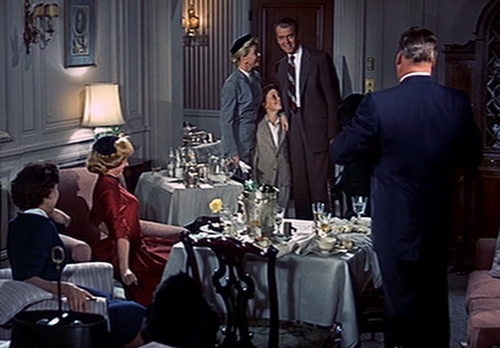Conclusion: A Truly Happy Ending?

Hitchcock’s The Man Who Knew Too Much is as much about a kidnapping and assassination plot as Vertigo is about the real Madeleine Elster’s murder. Both provide the framework within which all the film’s true machinations might take place. Set throughout this film are groupings of mirrors—musical, plot, character, familial and Lacanic—all contributing to the general story of a family in crisis. But since this crisis is not truly about Hank’s kidnapping is it not resolved in the end? Herrmann’s final mirror trick leads us to believe otherwise. After all this jostling for power on Ben’s part, what with the sedation and all, as well as Jo’s constant victories and reemergence into concert life, their family dynamic will never be the same. Herrmann’s final bit of scoring repeats the closing section of the opening credit music; a raucous finale featuring brass and percussion and ending in a series of diminished chords. A final tritone over the expected tonic brings the piece and the film to a close. This interval, the least stable of all, more than suggests that there is more than meets the eye to this happy family reunion. Indeed, the movie’s true point—the dissolution and reintegration of a crisis-wracked family—is just as resolved as this final tritone.